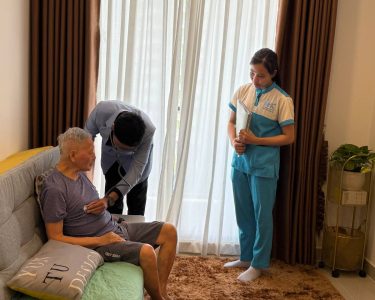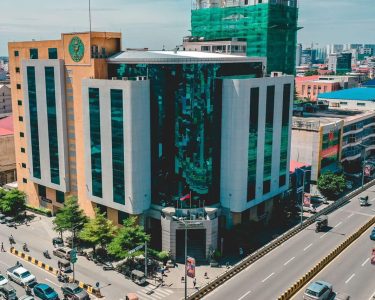Prou Sythan
Across ASEAN, families are increasingly vulnerable to economic shocks—from pandemics to climate-related disasters, from medical emergencies to sudden job loss. The COVID-19 crisis reminded us how fragile household finances can be, especially for those without formal safety nets.
Life insurance, which cushions families during moments of loss or illness, remains critically underutilised in Cambodia. Whilst Thailand and Malaysia enjoy life insurance penetration rates of 3% to 4% of GDP, Cambodia stands at just 0.4%. Only 8% of the Cambodian population has any form of life insurance—compared to 20% in Vietnam and 40% in Thailand.
The implications are staggering: the vast majority of Cambodians remain uninsured and unprotected in the face of rising risks.
This is not merely a coverage issue—it is a structural gap. When a breadwinner or main borrower dies unexpectedly, families are often left with mounting debt, stalled education for children, and increased dependence on informal loans or social networks.
The lack of protection impedes Cambodia’s development journey. To build a truly resilient society, we must make financial protection accessible, affordable, and trusted.
Bancassurance: Cambodia’s fastest path to protection
Cambodia has strong foundations to close its protection gap—starting with a high level of trust in banks.
Over 65% of Cambodian adults are now linked to formal banking services, and mobile payment usage has skyrocketed. In this context, bancassurance—where insurers partner with banks—has emerged as the country’s most effective life insurance distribution model.
For the past few years, bancassurance represents about 80% of the life insurance sales. Almost all major banks are tied up with leading life insurance companies in the country.
We’ve seen bancassurance transform the customer journey since 2023 with five partnerships, each designed to reach specific demographics which include salaried employees, loan clients, savings customers, businesses, and entrepreneurs.
These partnerships go beyond product sales. They embed protection into people’s daily transactions like automatically enrolling loan borrowers in credit life programmes, offering personal accident or hospitalisation coverage for both savings and loan accounts, and delivering protection alongside payroll services.
Other forms of protection include securing education funds with life insurance coverage for depositors and processing claims digitally—often within 24–72 hours, with personalised support.
More than 80% of our total premium volume now comes from bancassurance partnerships. Through all these bancassurance partnerships, there are about 600,000 lives saved. For many of them, this is their first encounter with formal financial protection.
Whilst the rest of the life insurance players focus on promoting savings products, we strongly believe that embedded insurance like credit life and protection are the most suitable propositions for banks’ customers.
ASEAN lessons: Leapfrogging through late adoption
Cambodia may be a late starter in the life insurance space, but this timing provides an advantage. We have the opportunity to leapfrog legacy systems and build inclusive protection using digital tools, simplified products, and embedded delivery models.
In Thailand and Malaysia, bancassurance contributes over 50% of new life business, aided by strong regulatory frameworks and widespread financial literacy. Vietnam has successfully integrated microinsurance with digital banks, reaching tens of millions through tiered, app-based policies. In Indonesia, insurers bundle life protection into micro-loans and savings groups via agent-assisted platforms.
These regional examples confirm what we’ve seen: embedded, trust-based, digitally enabled insurance is the future of protection. Cambodia’s regulatory openness, mobile-savvy population, and rapid bancassurance growth place us in a prime position to replicate and localise these successes.
Transforming the customer experience
Insurance cannot succeed in Cambodia if it remains complex or intimidating. In one case, the entire experience has been redesigned—from enrollment to claims—to be simple, fast, and meaningful. An in-house system was built to streamline policy administration and automate claims tracking.
Customers now receive confirmation of coverage instantly the moment they pay premium and submit the application, with policy contracts in Khmer language. In 2024, a mobile app was also launched for customers to view their policies, make any necessary information changes, pay premium, and file claims.
It is also recognised that digital cannot replace empathy. Human touch still matters—especially during loss. That’s why claim handlers are trained to provide both efficiency and compassion.
In 2024, there were about 10,000 claims processed, including $245,000 in death benefits paid to families affected by traffic accidents, representing 5% of total traffic accident fatalities. These real-world impacts reinforce the trust needed to expand insurance access.
Building financial literacy, one family at a time
Cambodia is a first-generation insurance market. There is no inherited knowledge of insurance, and misconceptions—such as “insurance is only for the rich” or “it doesn’t pay when needed”—are widespread.
We see education as core to our mission. Our initiatives include partnering with schools to run protection-focused modules, broadcasting short videos featuring customer stories and claims, and running social media campaigns in Khmer with visuals that explain key terms.
We have also worked with our bancassurance partner which has field officers into rural areas where mobile internet is limited. Through storytelling, analogies (e.g., comparing life insurance to a rice silo for the future), and Q&A sessions, we’ve built awareness brick by brick.
Financial protection is not just a concept—it becomes personal when people understand how it secures their children’s education or pays off their housing loan if tragedy strikes.
Policy momentum: Regulation and reform
Our regulators—the Insurance Regulator of Cambodia (IRC) and the National Bank of Cambodia (NBC)—have been instrumental in enabling innovation and growth. They support collaboration between insurers and financial institutions under NBC, product simplification, financial literacy, consumer protection, e-signatures, and embedded products.
Their openness to global best practices is helping Cambodia avoid the missteps seen elsewhere. Cambodia’s insurance operators are fortunate to have direct audience and conversation with various regulatory bodies through various working groups, chambers and associations, rarely seen elsewhere.
IRC always consults with the private sector before issuing any new regulations to ensure they are applicable and sensible and not conservative hindering the growth of the market.
Strategic priorities for 2025 and beyond
To move from coverage to impact, Cambodia must align on five pillars. First is the expansion of digital bancassurance, ensuring that every banking app and online loan process includes a (low-ticket-size) life protection option, with Khmer language support and no-paper onboarding.
Second, embedded microinsurance should become standard practice—integrating small-ticket life and health coverage into every credit, payroll, or savings transaction. Third, there is a need for education at scale, making insurance literacy part of both school and adult education curriculums, with support from the Ministry of Education, Youth and Sports, as well as the Ministry of Labor and Vocational Training.
Fourth, the industry must embrace transparent impact reporting by regularly publishing industry-wide claims data that highlights the number of lives protected and time-to-payment metrics. Lastly, a public-private integration for NSSF payments through banking apps should be established, aligning the National Social Security Fund with private insurers to offer supplemental coverage beyond work-related accidents.
Conclusion: Cambodia’s regional moment
Life insurance is not about preparing for death—it’s about love and safeguarding continuity. When done right, it ensures that a child can stay in school, a family can keep their home, and a dream can survive even in tragedy.
Bancassurance has proven to be Cambodia’s most effective tool to scale this protection. With continued regulatory support, digital innovation, and public trust, Cambodia can not only close its protection gap—but become a model for inclusive life insurance in the region.
The promise is simple: No Cambodian family should face loss alone. And with bancassurance as our bridge, that promise can be delivered.
Prou Sythan is the Chief Executive Officer of Forte Life Assurance in Cambodia. He is a leading figure in the Cambodian financial and insurance sectors, known for his contributions to policy development and public awareness of insurance.





